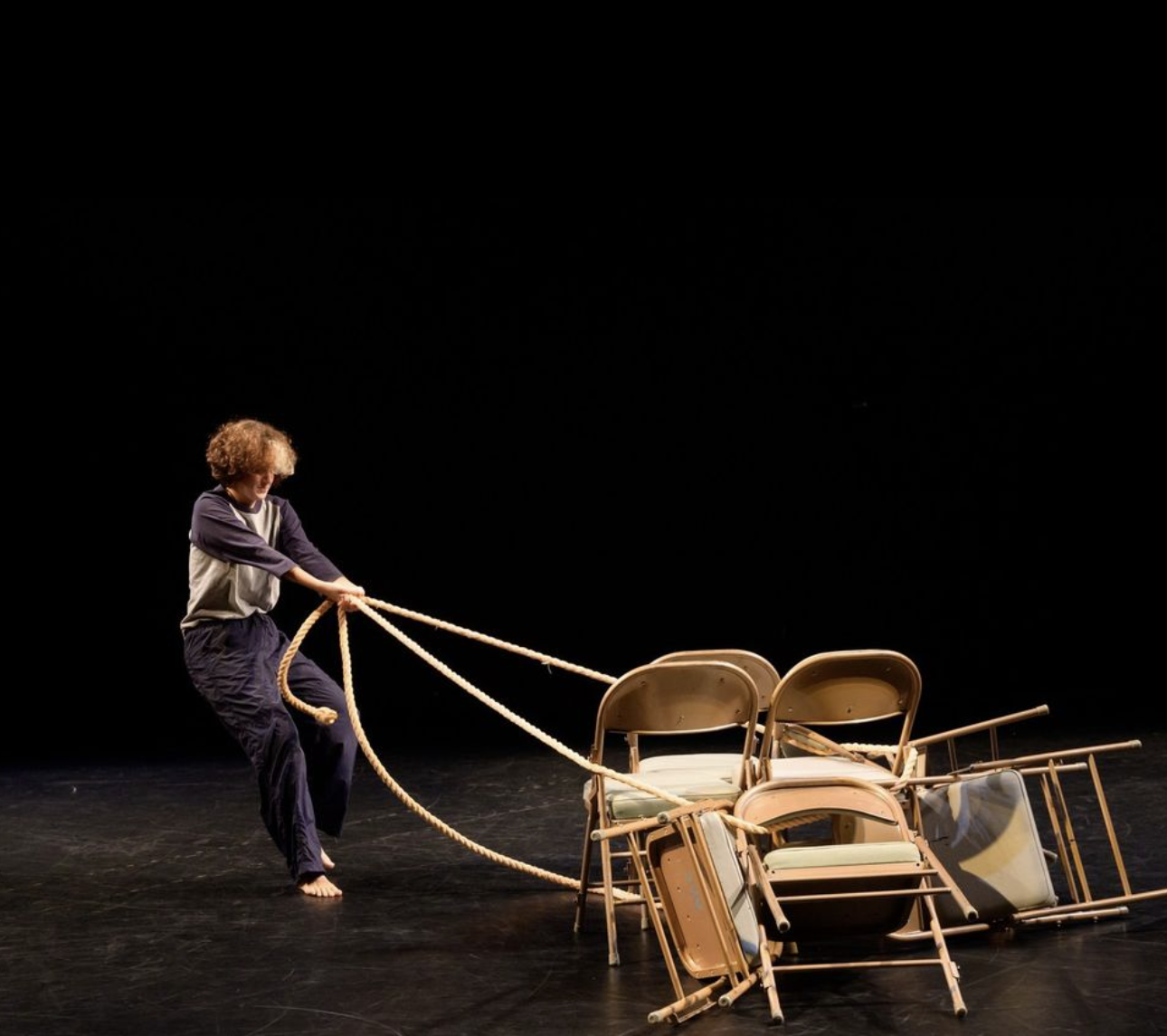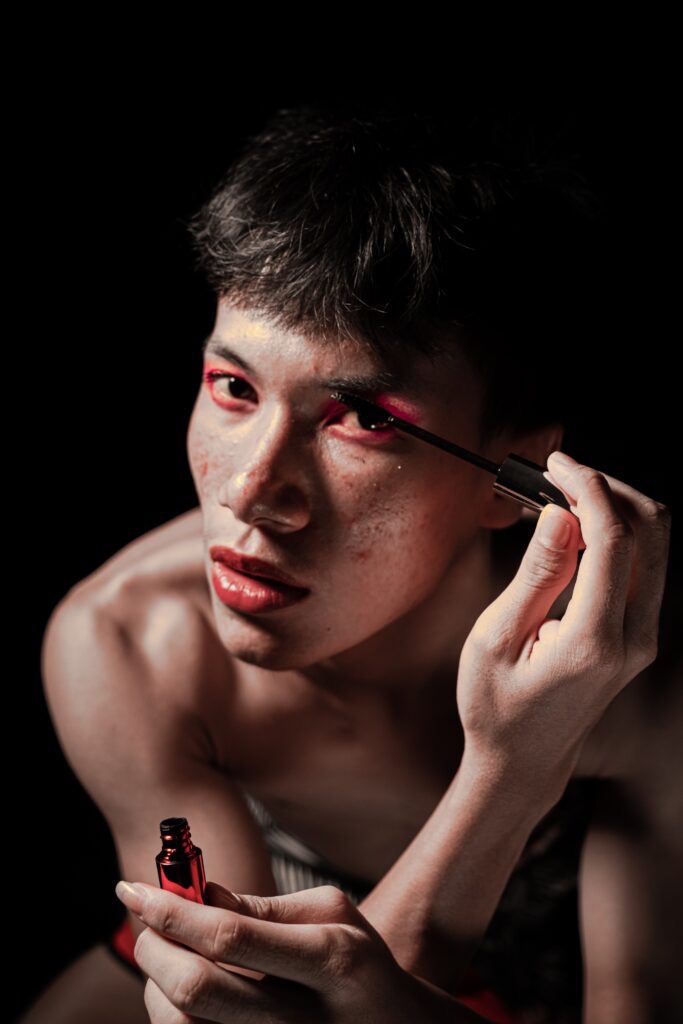Linnea Mayo ’26
Arts & Entertainment Editor
On Thursday, Sept. 26, the opening night of “Bodies Becoming: Three Evenings of Choreographic Research” was brought to Trinity. This three-part series features four student dancers engaging with three different choreographers throughout the semester for a month each. The series began with “Learning/Caring” which is an adaptation of “My Body as the Topic Coming Around Again//Vol 3 (Caring)” and originally choreographed by Professor of Theater and Dance Rebecca Pappas, as well as Elen Smith Ahren, Theo Armstrong, Alexis Robbins and Taylor Zappone.
The performance of “Learning/Caring” included Emma Lemieux ’28, Orfeas Spyraki ’28 and Alex Garrian’25. The original cast also included Venghour Than ’25, who due to an injury could not participate. Despite being down a performer, the show featured outstanding choreography and challenged perceptions of dance and caring for others.
“The student performers are just incredible. They’ve brought so much focus and they’ve really jumped into the deep end of something. The triptych took me three years to make and the piece took a year, but in just a couple of weeks, these students have learned a lot of really hard material,” said Pappas when interviewed.
The show was sold out, and as audience members piled in the crew were forced to add chairs and cushions for people. Once everyone was settled, Deborah Goffe, Executive Director of the Austin Arts Center and Artist-in-Residence in Theater and Dance, introduced the production by thanking the audience and emphasizing the importance of audience members. She was followed by Pappas who explained how “Learning/Caring” is meant to foreground the becoming part of the show rather than the final product.
“I really wanted to emphasize how dance is a way of asking questions. How dance is a way of knowing, how dance is a process that’s just like all the other research that’s happening on campus. I want the Trinity community to start seeing the different ways that dance is a kind of research and a kind of knowing, not only a form of entertainment,” Pappas said to the Tripod.
The first dance segment, entitled “Lingering,” began with Spyraki dragging a set of chairs tied together with rope from the front to back left of the stage before sitting on the chair. The other dancers soon joined, the three of them transitioning between different intimate positions of embracing and leaning on one another. “It was strange at first because you have to be able to show this physical vulnerability before people you don’t know very well, but it’s nice. And the more you do it, the more it makes sense,” explained Garrian. The dancers eventually migrated to the back right and expressed dynamic gestures and movements before concluding with a powerful slam of the chair onto the floor.
“This piece is meant to feel a little bit like you’re peeking inside and watching people having an intimate experience. For the audience to pick up that energy and vibration of being a bit unsettled, while also looking for care and moments of connection inside of it, is what I would hope the overall internal experiences for the audience was,” explained Pappas.
The second part of the performance included an exercise of the crew walking backwards and forwards and Pappas joining in. As the crew was moving, Pappas spoke on experiencing the light, wind, duration, direction of their movement and told the dancers that “what you’re doing is exactly what you’re supposed to be doing.”
“The overall structure of this piece is about practicing presence, practicing showing up with each other, holding each other, caring for each other, sometimes carrying each other, leaning on each other; just these experiences of being together and how this is built into the whole world,” explained Pappas.
Throughout the performance, Pappas instructed people to exaggerate their movements, allow their movement to get larger and smaller and drew the audience’s attention to the auditory aspects of their interactions. Once the dancers moved beyond their line, they engaged with other dancers and objects on the stage. The audience watched as they pushed chairs, threw pillows back and forth, kicked pillows, pushed each-other and pulled rope up and down.
The final dance segment was a solo piece written by Pappas and Garrian and was meant to envision a future of hope. “The focus of the solo is about hope and how to find hope for the future in a world where it seems like everything is crumbling down around us,” explained Garrian. This was not only Garrian’s first ever dance performance, but also her first time choreographing. “It’s so different from everything I’ve done before, so I was learning to let go of the perfectionism and just be in the present moment. I really appreciate all my fellow dancers and Professor Pappas, they were all very supportive of me,” adds Garrian.
The piece featured a recording of an Armenian lullaby as Garrian moved around the stage and brought these ideas of hope to life. The full performance would have included the voices of the other performers as well. “The lullaby I chose is an Armenian lullaby and that’s always been a part of myself that’s really important to me. I want to be more connected and involve myself further in my culture, so this was a way where since I got to choose, I wanted it to be something that matters to me and what I hope my future will be like,” explains Garrian.
The solo performance focused on Garrian, and the audience watched as she moved across the stage while looking up throughout to envision hope and what hope means for her, and included an embrace with Lemieux. “Practicing it alone was odd because it’s meant to show the future I hope for, which includes people together and supporting each other. Once we actually did it with everyone else there, it helped connect it together for me. While it’s my future, it’s everyone else’s future too,” explained Garrian.
The performance concluded with a talk-back facilitated by Goffe. One audience member asked dancers about how the process of being present has impacted other areas in their personal life. In response, Spyraki explained that the energy you put into things doesn’t just stop there and that caring about a piece of something means you care about the whole world. Another audience member commented that the performance ended with an embrace, which emphasized how the dancers continued to support one another and stuck together throughout the entire piece. This connection between the three dancers was evident throughout all three dance segments, and their dancing seamlessly blended together to tell a story of being together and what it means to show up for others with presence, especially in times of difficulty.
In the second project of “Bodies Becoming: Three Evenings of Choreographic Research,” Sarah Smith will present an excerpt of “Inside the Breath (In Network Time),” which draws inspiration from the writings of philosopher and poet Gloria Anzaldúa, particularly her book “Borderlands.” The third project, choreographed by Trinity hip-hop instructor Brandon Couloute, will be a live hip-hop concert in collaboration with Hartford singer Marcus Rodriguez and feature professional hip-hop dancers from Hartford performing alongside the students. The performers are also hoping to showcase the full performance of “Learning/Caring” later in the semester with all four dancers.





+ There are no comments
Add yours